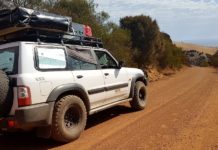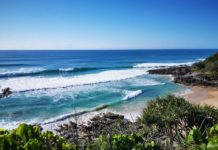
Located on the outskirts of Sydney, the UNESCO-listed Blue Mountains National Park is a breathtaking natural wonder that attracts millions of visitors each year. Known for its dramatic scenery, lush forests, cascading waterfalls, and unique rock formations, the park offers an array of activities for nature lovers and adventure seekers alike. This comprehensive guide will help you plan your visit to the Blue Mountains National Park, covering everything from top attractions and activities to practical tips for a memorable trip.
Table of Contents
Overview of Blue Mountains National Park
The Blue Mountains National Park is part of the Greater Blue Mountains World Heritage Area, which spans over one million hectares. The park is named after the blue haze that emanates from the eucalyptus trees, creating a mystical and serene atmosphere. Located just 80 kilometers west of Sydney, it’s an accessible escape into nature from the bustling city.
Discover the flora and fauna of the Blue Mountains on bushwalks through the park (on foot or by bike). There are a few sites, where you can go climbing or canyoning if you have got the right equipment. Depending on what you plan to do, you could stay from 1 to 3 days to get the most out of your stay the park. While you are visiting the park, you can always get location markers at the various information points in the park.
When to visit the Blue Mountains?
The Blue Mountains can be visited year-round, but the best time to visit is during the spring (September to November) and autumn (March to May) when the weather is mild and the scenery is at its most vibrant. However, check the weather before you go as the temperature can be very different from Sydney and the nights here are cool.
For reliable weather information in Australia, visit bom.gov.au
How to get there?
By car
The easiest way to explore this vast area is obviously by car. From Sydney, it takes about 1.5 hours to get to the national park. You take the M4 and then the A32 to Katoomba, the starting point for all park visitors. The Blue Mountains is definitely the most accessible National Park in the Sydney region.
In a campevan / motorhome
If you want to visit the Blue Mountains in a campervan, the main advantage is that you can spend more time there, sleeping and eating there cheaply. If you don’t have your vehicle, you can hire a campervan in Sydney. Most rental companies are located in the suburbs, which allows you to go directly inland without having to cross the city.
To camp on site, caravan parks are available in Katoomba, Blackheath or Lithgow. You will find some free campspots such as Blackheath Glen Reserve on Prince Edward Street, or Murphys Glen Campground (easily accessible by 4 × 4).
By train
Your adventure can also begin at the Sydney Central Station, from where a train will take you to Katoomba in 2 hours. With an Opal card, you only pay about 8 AUD. The train runs every hour and stops at all stations of the park. From Katoomba, you can either continue on foot or by public transport.
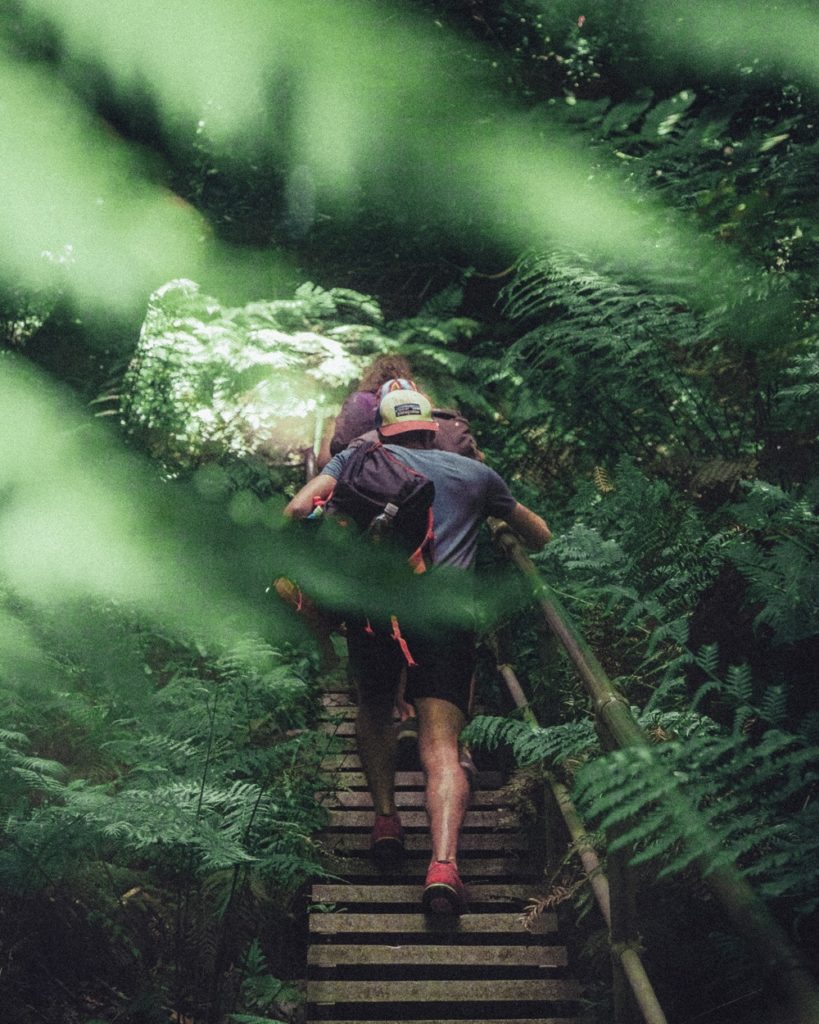
Top Attractions in the Blue Mountains
The highlights can be seen in one day, while the long hikes allow you to stay on the site for more than a week without getting bored. Here is a list of highlights and hikes not to be missed:
Three Sisters and Echo Point Lookout
One of the most iconic landmarks in the Blue Mountains, the Three Sisters is a unique rock formation located at Echo Point in Katoomba. Legend has it that three sisters were turned to stone by a witch doctor to protect them from a tribal battle. The viewing platform at Echo Point offers stunning views of this natural wonder.
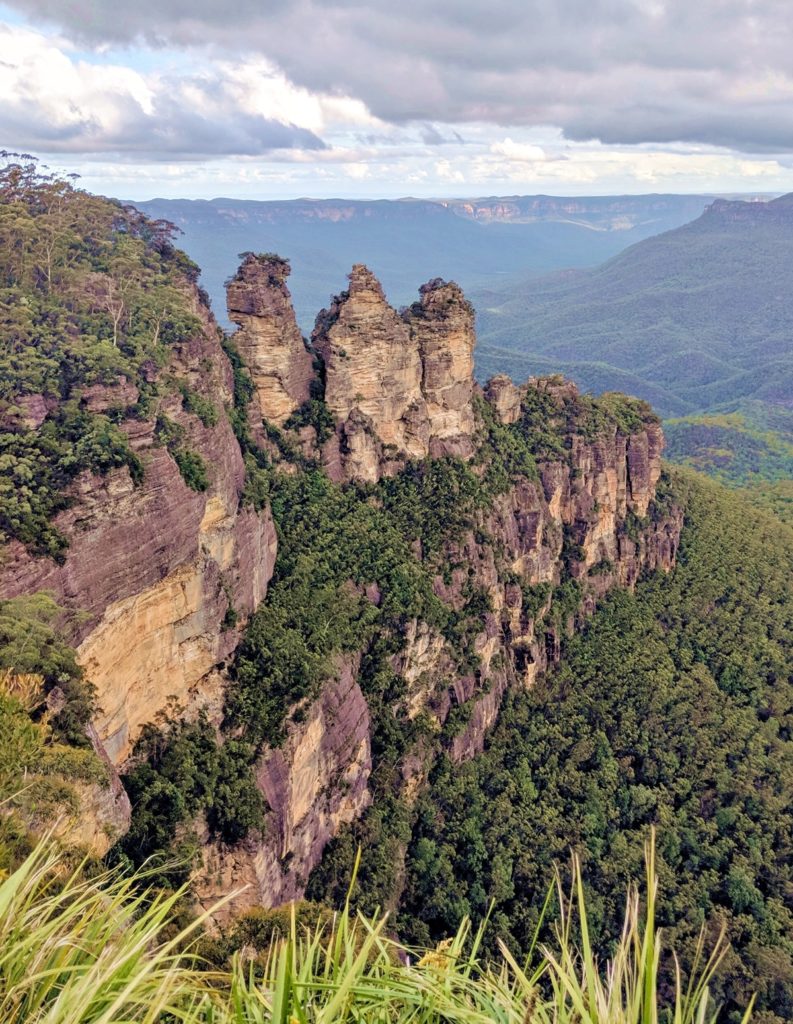
Wenworth Falls
Wentworth Falls is a must-see waterfall in the Blue Mountains. The falls cascade over three tiers and are accessible via several walking tracks. The Wentworth Falls Track offers breathtaking views and an opportunity to explore the surrounding area.
Katoomba
This marks the starting point for all park visitors. At the visitor information centre, you can ask for advice and recommendations, book activities as well as rent bicycles and equipment. Apart from that, the town doesn’t have much to offer except perhaps the Street Art Walk.
Scenic World
Scenic World in Katoomba provides a range of attractions to experience the beauty of the Blue Mountains from different perspectives. It includes the Scenic Railway (the steepest passenger railway in the world), Scenic Skyway, Scenic Cableway, and Scenic Walkway. These attractions offer breathtaking views of the Jamison Valley and the surrounding landscape.
Leura
Visit the picturesque village of the Blue Mountains: Leura. Take a stroll along the shopping street past cafes, restaurants, crafts shops, bookstores, art galleries, and even a small farmer’s market. Sneak through the small alley that leads to the candy store. This place is every child’s dream!
Lincoln’s Rock
To end a beautiful day in the park, we strongly recommend you to go to Lincoln’s Rock! This huge, flat rock is the best possible place to watch the sunset over the Blue Mountains. It is usually not too crowded, so you will certainly find a nice spot with a breathtaking view of the valley.
To round off a great day in the park, we recommend going to Lincoln’s Rock for a well-deserved drink! This huge flat rock stretches out over the valley and offers the best possible spot to take in a sunset in the Blue Mountains. The place is not as well-known so you can easily find a good spot. The view from here is breathtaking.
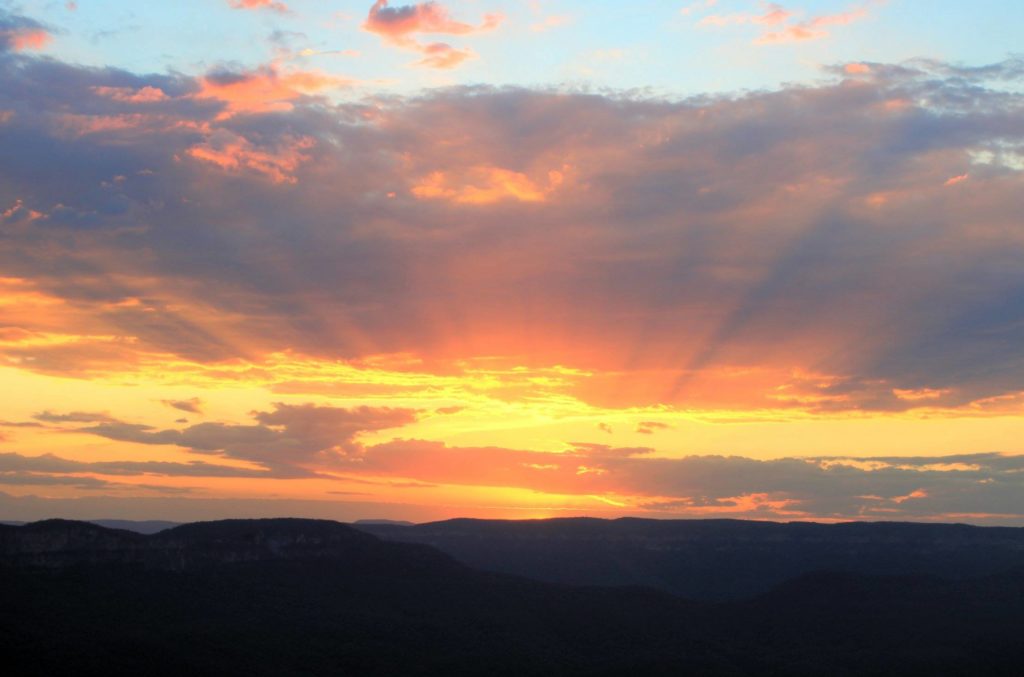
Jenolan Caves
Located about an hour and a half from Katoomba, the Jenolan Caves are one of the oldest and most spectacular cave systems in the world. Make the most of the tourist drive at dawn, as you will be alone at this time of day (it starts to get pretty busy from 11 o’clock). This winding road overlooking the valley and the forest is incredibly beautiful. At the end, you will drive through a giant rock via a tunnel that leads you directly to the caves. There are several caves, all listed on the Jenolan Caves website. These caves in the heart of the Blue Mountains are definitely a must-see!
Travel Advice
You can find packages for cave tours online. Including deals with which you can visit the 2nd cave for half price. Guided night walks are also possible when booked in advance.

Grose Valley
The Grose Valley is a vast and dramatic valley offering excellent hiking and camping opportunities. The views from Govetts Leap Lookout are particularly impressive, showcasing the sheer cliffs and dense forests of the valley.
Lookouts
It’s hard to say which lookout is the best, as each one offers a different view of these beautiful Blue Mountains so don’t hesitate to stop when you come across a lookout along your way. Moreover, lookouts are often the starting points for many hikes or walks. The scenery is different depending on the time of day and the weather. The blue mist can quickly turn into a dramatic-looking cloud and a stunning panorama. In addition, most of the lookouts are the starting points of hiking trails.
Here is our selection of the best lookouts:
- Evans Lookout: Perfect for the end of the day. It’s behind Katoomba.
- Govetts Leap Lookout: You get a scenic view of the Blue Mountains plateau. It’s the perfect place to see the contrast between the blue of the mist and the eucalyptus green. From there, you can choose between a couple of hiking trails.
- Sublime Point Lookout: This one lives up to its name offering a sublime view. Have a picnic and relax for a while.

The best hikes
There is certainly no lack of hiking trails in the Blue Mountains national park. Find a complete list of all routes here. There is something for everyone, no matter what level. From the 45-minute Three Sisters Walk to the three-day Six Foot Track, there’s plenty to choose from.
We recommend the following trails:
- Three Sisters Walk: It takes about an hour to see the three sisters, but it’s worth it!
- Overcliff Undercliff Track: 3.5 km in the picturesque area of Wenworth.
- National Pass Walk: This is probably one of the most impressive trails that will take you along the cliff over dizzying stairs. You can see things with the eyes of the first discoverers of the Blue Mountains.
- Cliff Top Walking Track: From the Evans Lookout you can hike to the Govetts Leap Lookout, where you can enjoy stunning views of the valley and waterfalls.
- Grand Canyon Track: A 6.3 km trail that runs through the valley at the foot of the Blue Mountains.
- Ruined Castle: A challenging 7-kilometer hike offering panoramic views of the Jamison Valley.
Advice to hikers
The Wildwalk app, available on iOS and Android, will be your best friend. It identifies the hikes and their level of difficulty, and also contains topographic maps. It also updates you about closed circuits on almost all National Parks in NSW. A real find!
If you plan to visit several national parks in New South Wales, buy a pass for the national parks. This investment will allow you to save money in the end. For more information, visit the NSW National Parks website.
Activities & Organised Tours
If you prefer to visit the national park with an organized tour, there are many options for 1 to 2 days and for all budgets. Allow about $90 for a single day, or up to $500 for a 2-day tour.
Day trips
Departing from Sydney, you will find many excursions that allow you to discover the blue mountains in one day. For small budgets, you have small group tours in the $100 including a pickup from Sydney and the visit of the main points of interest with obviously the view on the Three Sisters.
For around $150, you have group tours including a visit to an animal park and the Scenic World pass (Cableway, Skyway and Railway). Usually, the bus will pick you up from your hotel.
And for a more exclusive tour, you can even explore with a local guide in a 4WD (from $250).
Day trip with activities
Some tours combine sporting activities with exploring the area. In the Blue Mountains, there are tours with canyoning and abseiling. The tours depart from Katoomba early in the morning to make the most of the day. The cost is $220 per person.
Activities in the Blue Mountains
For those who plan to visit the region on their own, here are also all the activities available (except walks/hikes):
- Scenic World (Cableway, Skyway and Railway).
- Visit of the caves (Jenolan caves)
- Canyonning
- Abseiling and rock climbing.
- Mountain Biking.
Blue Mountains 3 day itinerary
To get the most out of the park and to tick most of the beautiful places off your list, we recommend a stay of 3 days and 2 nights. This means you don’t need to rush through the park and you can fully enjoy the beauty of the landscape. We have also made a 2 day itinerary for those with less time.
Day 1
The first stop is at the park entrance, at Wenworth Falls. Then you drive back to Katoomba and visit the information centre. As the day soon comes to an end, do a detour to the Evans Lookout. If you still have enough time, you can also go to the Govetts Leap Lookout. Otherwise, tomorrow is another day.
Length of the walk: 20-25 km
Day 2
After a traditional brekkie, it is time for a nice walk off the beaten track. Have patience! You will see the Three Sisters at the end of the day when most of the tourists have gone. Choose a couple of the number of trails, depending on the difficulty and the location of your accommodation.
Then you take a well-deserved break at Sublime Point Look Out before heading over to Leura.
In the afternoon, it’s time to see the Three Sisters from Echo Point Lookout!
To end this beautiful day, enjoy the sunset from Lincoln’s Rock
Length of the walk: 30-40km
Day 3
Take the road for about an hour to get to the Millionth Acre Recreation Area. Then continue on foot to discover the splendid Tourist Drive which will lead you to the intriguing Jenolan Caves. You can easily spend the morning there. Treat yourself to a last picnic in the great outdoors with the wallabies at Jenolan Cottages before visiting the caves.
Length of the walk: 20-25km
Share your ideas and suggestions for the blue mountains national park with other readers in the comments below.
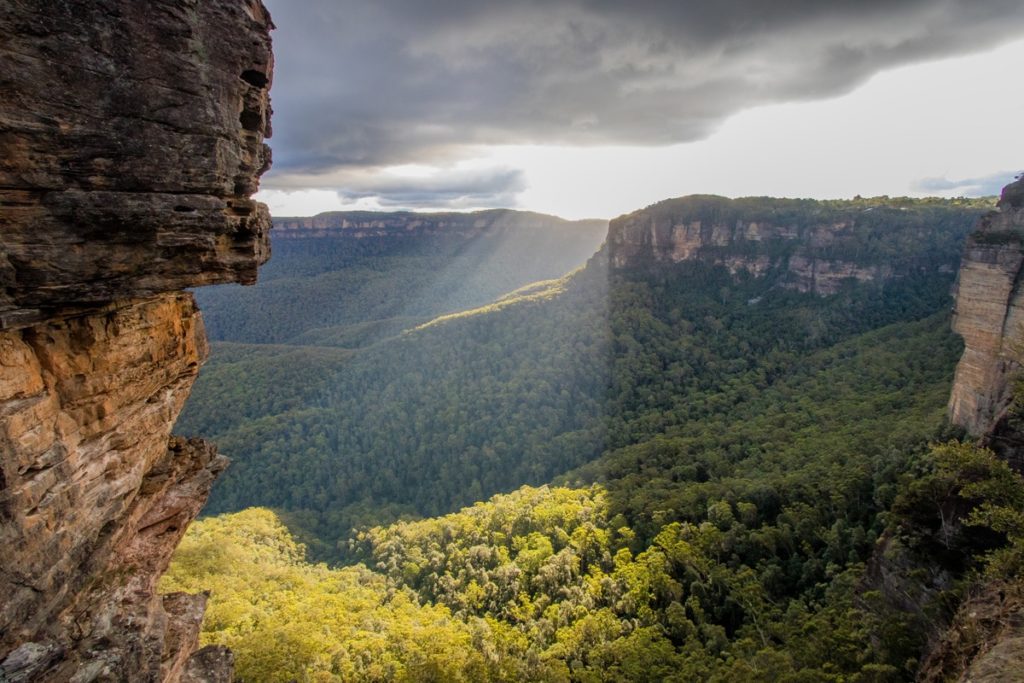
Blue Mountains 2 day itinerary
How to explore a 1436km² park in 2 days? Well… you will have to make strategic choices! We offer an itinerary that focuses on the Blackheath region. The ideal place for lovers of rainforests, menthol scents, hikes and waterfalls.
Day 1
Start your day at the Blackheath visitor centre where you can get more information, then visit the Evans Lookout. Enjoy the great view of the lookout.
Then join the Cliff Top Track, a 3.2 km walk along the crest of Grose Valley. The numerous viewpoints equipped with benches and guardrails along the way allow appreciable breaks, with an endless view of the blue mountains. Be warned, the stairs are steep and it’s hot! Then return to Govetts Leap Lookout via the road. It should take you half an hour on foot or 5min hitchhiking.
As the night approaches, join one of the many free campsites nearby. You will find in particular the Perry’s Lookdown campsite. This campsite offers a superb view and breathtaking sunsets! Nothing better to end a beautiful day. Take your chairs, your picnic, join the lookout and enjoy.
Length of the walk: aprox. 15km
Day 2
After your breakfast, join the Cliff Top Track to start a cliff descent to the Beauchamps Falls (3 km with a vertical drop of 400 m). Make sure you have good shoes, because the stairs are steep and water trickles at times. The view of the waterfalls is magical, and if you are lucky you will be able to see a rainbow emerging from the waterfall. With all the giant ferns, creepers and huge eucalyptus, you will feel as if you were in some prehistoric lands – whiteout dinosaurs!
Once at the waterfalls, continue your route for the 11 km trek called Junction Rock via the Rodriguez Pass. You will be able to observe lyre birds, these rare birds which imitate the cries of other birds and other surrounding noises. You will also have the opportunity to swim in beautiful natural pools, picnic by one of them and photograph lizards or other local animals.
Before leaving the park, pass by Echo Point Lookout to see the famous Three Sisters and soak up the Aboriginal culture of the Katoomba tribe.
Length of the walk: 30-40km
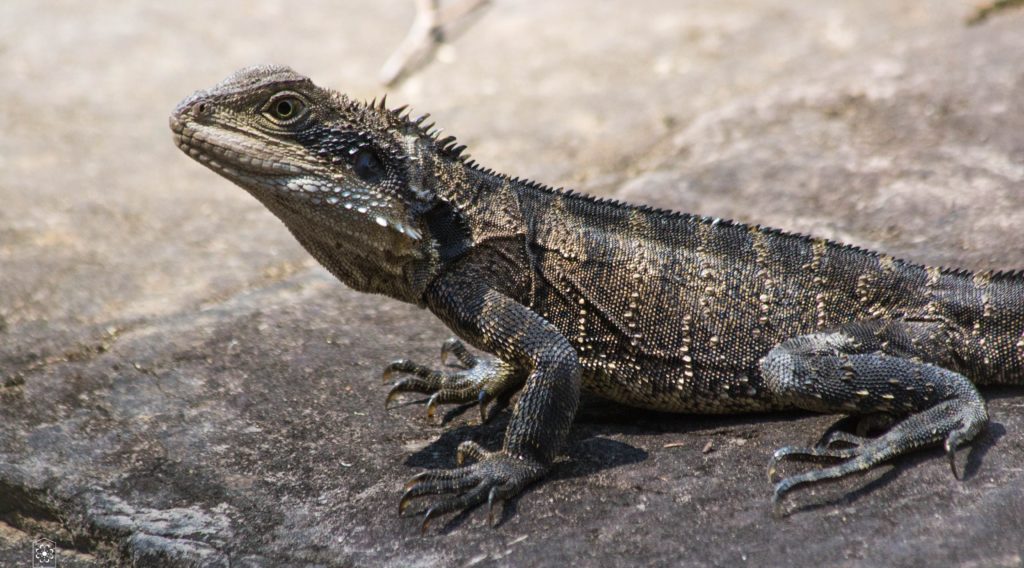
What are the dangers in the Blue Mountains?
Despite the beauty of the Blue Mountains, this area is not without its dangers. Bad weather is one of the main reasons for the many accidents that occur in the park.
Fires
Beware of forest fires; they are not as uncommon as we might think – the widespread fires of 2020 are sad proof of this. It is easy to get trapped by flames and unpredictable smoke if you are caught in a fire. Wind and storms can spread these disasters at an uncontrollable rate. The Fires Near Me app, available on iOS and Android, will be your best ally to keep up to date on any fires.
Falling
Beware of falls when hiking, rain can make the terrain slippery and dangerous. Even in dry weather, the ravines still present a risk as it is equally as easy to slip on rocks or gravel. Stay alert and do not go out alone. If you can’t go with someone, make sure you tell family or friends when you are leaving and when you expect to return as you may not be able to get a signal once you get there.
Drowning
If you decide to go canyoning in the Blue Mountains weather conditions can change quickly with sudden rainfall and large floods can be fatal.
How to avoid the risks
According to the NSW National Parks website, approximately 130 hikers get lost or need to be rescued each year in the Blue Mountains. While most are found within 24 hours, other cases end in tragedy. So there are a few safety precautions to take when exploring the Blue Mountains:
- Always let someone know where you are going and how long you will be gone. If you are staying in a hotel, inform the reception. You can also download apps such as Emergency Plus or What3Words to help locate you should the need arise.
- Take a guidebook or map with you in case you don’t have access to your GPS.
- Always stay on the marked paths!
Practical Information
Information on the national park
Accessing the park is free, except for attractions at Glenbrook where you must pay a fee (8$ per day per vehicle).
Blue Mountains National Park website : www.nationalparks.nsw.gov.au
Map of the park : click here.
List of trails or walks in the park : click here.
Visitor advice
Make sure you take plenty of water, as the days can get hot and long, and the park does not have refill stations. Make sure you are prepared and check the weather before leaving.
If you have the choice, we recommend the visitor centre at Blackheath over the one at Echo Point. Parking at Echo Point is not free and it can be tricky to find a free space. You also have to pay $5 to access Echo Point whereas parking at Blackheath is free, and you can get a map of the park here too (crucial!). The map will show you respective points of interest depending which site you are at, or you can always ask one of the friendly visitor guides at the centre for advice.
Where to sleep
As the area is very popular with tourists, the park offers a lot of accommodation options. The mobile applications Campermate (free) and WikiCamps ($8) will be your best friends.
For those arriving with a vehicle, caravan parks are available in Katoomba, Blackheath and Lithgow. You can also find hostels or even a multitude of Airbnb’s, convenient for those who want a little comfort before going for a walk.
The place you choose to stay will depend on the time you want to spend in the park. If you stay only one night, it is wiser to sleep in the surroundings of Katoomba, tourist heart of the Blue Mountains.
Van and Campervan rental
You can compare several vehicle options and price ranges at www.motorhomerepublic.com.




















